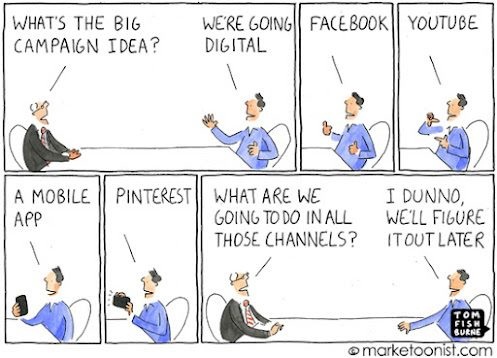Finding Time To Be Strategic
August 6th, 2012 by hosfeld“We don’t have time to be strategic, Kathleen!â€
 That’s the tongue-in-cheek greeting I get whenever I touch base with one of our clients. It’s a sentiment that many executives probably share. Yet it always reminds me of Hall of Famer John Wooden’s quote: “If you don’t have time to do it right, when will you have time to do it over?â€Â If you have the chance to do it over.
That’s the tongue-in-cheek greeting I get whenever I touch base with one of our clients. It’s a sentiment that many executives probably share. Yet it always reminds me of Hall of Famer John Wooden’s quote: “If you don’t have time to do it right, when will you have time to do it over?â€Â If you have the chance to do it over.
According to a research by Chris Bradley and colleagues, reported by McKinsey, most companies fail to meet even three of ten standards for good strategy. These standards include the following:
- Will your strategy beat the market?
- Does it tap a source of advantage?
- Does it put you ahead of trends?
- Is there conviction to act on the strategy?
- Is it translated into an action plan?
Their research suggests a strong case for companies’ need to spend more time on strategy formulation.  The challenge is “right-sizing†the strategy process for the time you have without sacrificing the quality of the thinking.
If time is short, then strategy processes have to be strategic themselves and focus on what is essential. Three of the insights from the Bradley article, “Managing the Strategy Journey†point to these essentials. First, strategy requires the engagement of a cross-functional team of executives across silos. Second, there’s typically an intensive effort at the beginning to clarify strategy followed by a disciplined ongoing process of refinement and implementation. Third, the intensive process at the beginning needs to result in all members of the strategy counsel creating a shared understanding of 1) where they are, 2) what will happen if nothing changes, and the 3) compelling future state to which they aspire.
There are several ways to engage the intensive effort at the front end. Bradley describes a process of spending 2-4 hours each week or every other week engaged in a structured strategy conversation.  He and co-authors recommend spending as much time on strategy as is spent on operational issues. The strategy process is then integrated into the annual process of forecasting tied to the budgeting.
A different approach to the intensive front-end piece is to structure a series of executive intensives, possibly 2 to 3 two-day meetings, with homework between sessions. Â These then can also be integrated into forecasting and budgeting.
While the Bradley article describes a process appropriate for large corporate clients, the basic insights of the article captured above, and the two approaches to structuring the process can be tailored to work-teams and middle-market size organizations. Experiment with what works for your organization.
For additional inspiration, you can read the entire Strategy Journey article here.
It refers to an earlier article on classic tests of a strategy which was published last year. That article along with links to a wealth of supporting resources is here.






